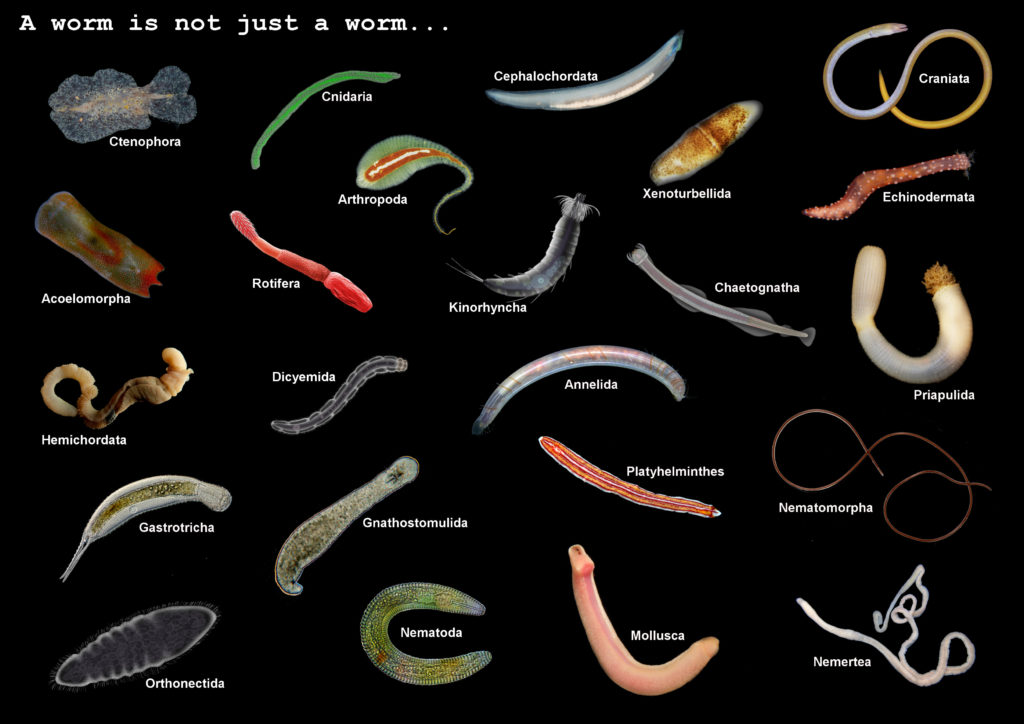A worm is not just a worm…
Animals come in an enormous variety of shapes, but the body-plan we see cropping up again and again across the constellation of animal forms is a long and thin form – a ‘worm’ in lieu of a better word. Of the 35 animal lineages at least 23 of them have representatives that are worm like or never exhibit anything other than a worm-like form:

Even among the tetrapods the draw of this incredibly successful shape has been hard to resist as the long sinuous bodies of snakes, amphisbaenids and caecilians attest. Even some mammals, albeit limbed, have evolved long thin bodies – just think of a weasel or a stoat. When the first real naturalists were trying to make sense of animal diversity, huge tranches of animal life were simply grouped as vermes (worms), even though the animals dumped in this taxonomic dust-bin represented disparate branches of the animal family tree with little in common beyond their outward appearances.
Why do we see a worm-like form in so many of the animal lineages? The answer is that it allows an animal to exploit all sorts of habitats where a more bulky shape would be a real handicap. A ‘worm’ can burrow with relative ease through marine sediment and soil, but it is among the parasites where this type of body shape has been the greatest boon. A long thin body allows parasitic animals to inhabit the long, often sinuous interior spaces of other, larger animals and to even squeeze between groups of cells. Some of these parasitic ‘worms’ are so bizarre in both appearance and lifestyle that it’s no surprise that the vast majority of people don’t hug them to their bosom on a regular basis.
Take the enigmatic animals known as tongue worms. These are not closely related to the earthworms in your garden. Far from it, as they are actually crustaceans that have taken to exploiting the many varied delights on offer in the respiratory tract of vertebrates – mostly reptiles, although one species is a big fan of reindeer sinuses. The worm-like form of these animals was obviously the best fit to the habitat and apart from two pairs of vestigial limbs surrounding their mouth any superficial affinities to their close, arthropod relatives have disappeared.

Not to be out done, nematodes and cestodes are perhaps the accomplished of all parasitic ‘worms’. Approaching nine metres in length, the longest nematode in the world lives solely in the placentae of sperm whales where it soaks up nutrients, accentuated by its long thin form. The tapeworms have gone one step further and the surface area of their body is greatly increased by tiny finger-like projections, very reminiscent of intestinal lining. As the largest animals that have ever lived, whales also have the largest tapeworms that have probably ever existed. The giant tapeworm of these mammoth marine mammals uses nearly all of its 30 metre body as an intestine to absorb nutrients from the gut contents of its host.
Leave a Reply